Blog Posts
By Year
20262025
2024
2023
2022
2021
2020
2019
2018
2017
2016
2015
2014
2013
2012
2011
2010
2009
2008
2007
2006
2005
2004
2003
2002
2001
2000
1999
1998
| Fun with neutral density | |
| Blurring running water with filters and long exposure. | |
| June 14, 2023 [Photos] | [Next Page - Backyard brawl] |
I have always known that using long exposure times on running water creates an interesting effect, but had never actually done it. When I was out checking trailcams in May I noticed a nearby creek running high with spring runoff, and I used a circular polarizer to cut down the light and get exposure up as long as 1.6 seconds at f/22, ISO 50. That blurs the water, but not really enough. So I bought a 6x neutral density filter. (See below for a discussion of what 6x means.) I was able to get exposure up to 30 seconds, but 15 seconds at f/16 also works well. It should go without saying, but with the extremely slow shutter speeds a sturdy tripod is mandatory. The lens was my new 24-105 on the Canon 6D Mark II. On an older camera, use mirror lockup to minimize vibration. There aren't a lot of opportunities to use an ND filter since most of the time I want more light, not less, but now I have one. I've done four days of experiments, with the images below from today. I'm contrasting fast shutter speeds with slow in these images. Exposure data is noted. For more images from my experiments, click here to load my Spring 2023 photo page, then scroll down to the last 15 images. 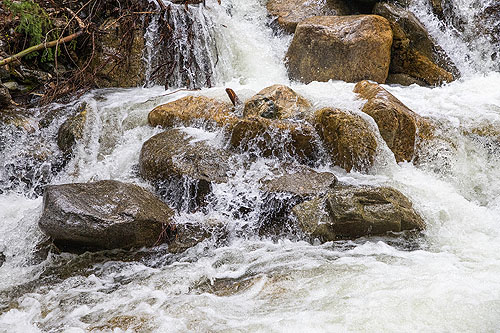 f/5.6, 1/1250, ISO 1600, 70mm focal length 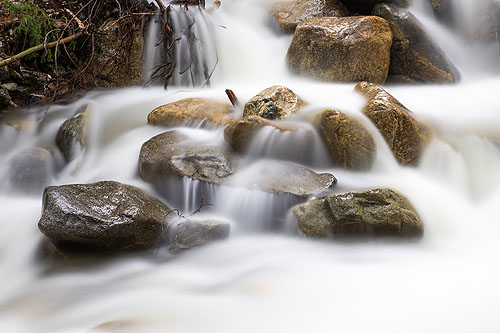 f/22, 30 seconds, ISO 50, 6x neutral density filter, 70mm focal length 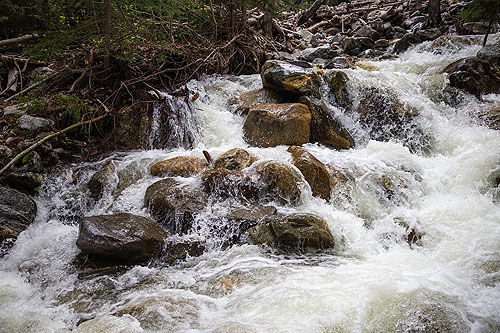 f/4, 1/2000, ISO 800, 43mm focal length 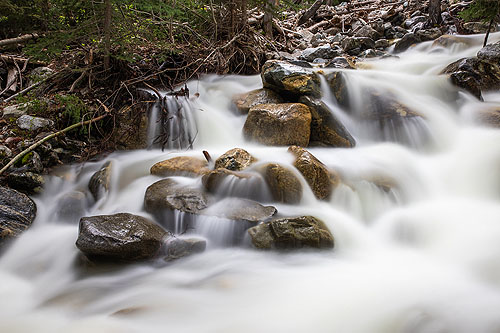 f/22, 10 seconds, ISO 100, 6x neutral density filter, 43mm focal length The math of 6x: ND filters come in various densities, from 2x to 15x. The most common seem to be 6x and 10x. There also are variable ND filters, two polarizers stacked together, that are more expensive. The 6x (six f-stops slower) seems good enough for me, and I can stack my polarizer if I want to pick up another 1-1.5 stops. The math associated with the six stops is it reduces the light to 1/64th of what it was (1/2^6), about 1.6%. I saw this result in a shutter speed of 30 seconds at f22, ISO 50. Another common ND filter is 10x, which would be 1/1024th (1/2^10) of the unfiltered light, or about 0.1%. Since each stop doubles the time, I believe this would slow my shutter speed to 8 minutes. 30 seconds is the slowest shutter speed that can be set on my 6D, so going longer would require fiddling with the bulb setting. Nope, 6x is fine. So how does an ND filter compare to a solar filter, which I've used at times in the past 20 years to shoot the sun? A solar filter only allows through 0.00001% of the light from the sun. Without doing the math, I'm guessing that shooting a waterfall with a solar filter would require a shutter speed measured in days. This is from the 2017 eclipse, 1/500 second, f8, ISO 800.  Solar filter used during preliminary phase of 2017 total eclipse Here are a couple other example from New York 2011 where slow shutter speeds can be used to interesting effect. The first is Grand Central Station, exposure 1.6 seconds. The second is headlights and taillights on a New York street, 15 seconds. Both images taken with Canon G6 which has a built-in neutral density setting. 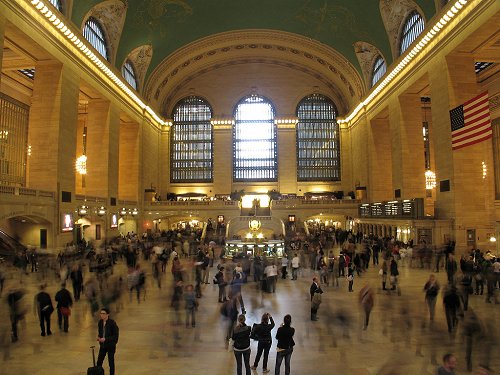  | |
Top Menu | Destinations | Years | Species | Aircraft, etc. | Blog | Contact Info
All photos ©1998-2026 by Thomas O'Neil